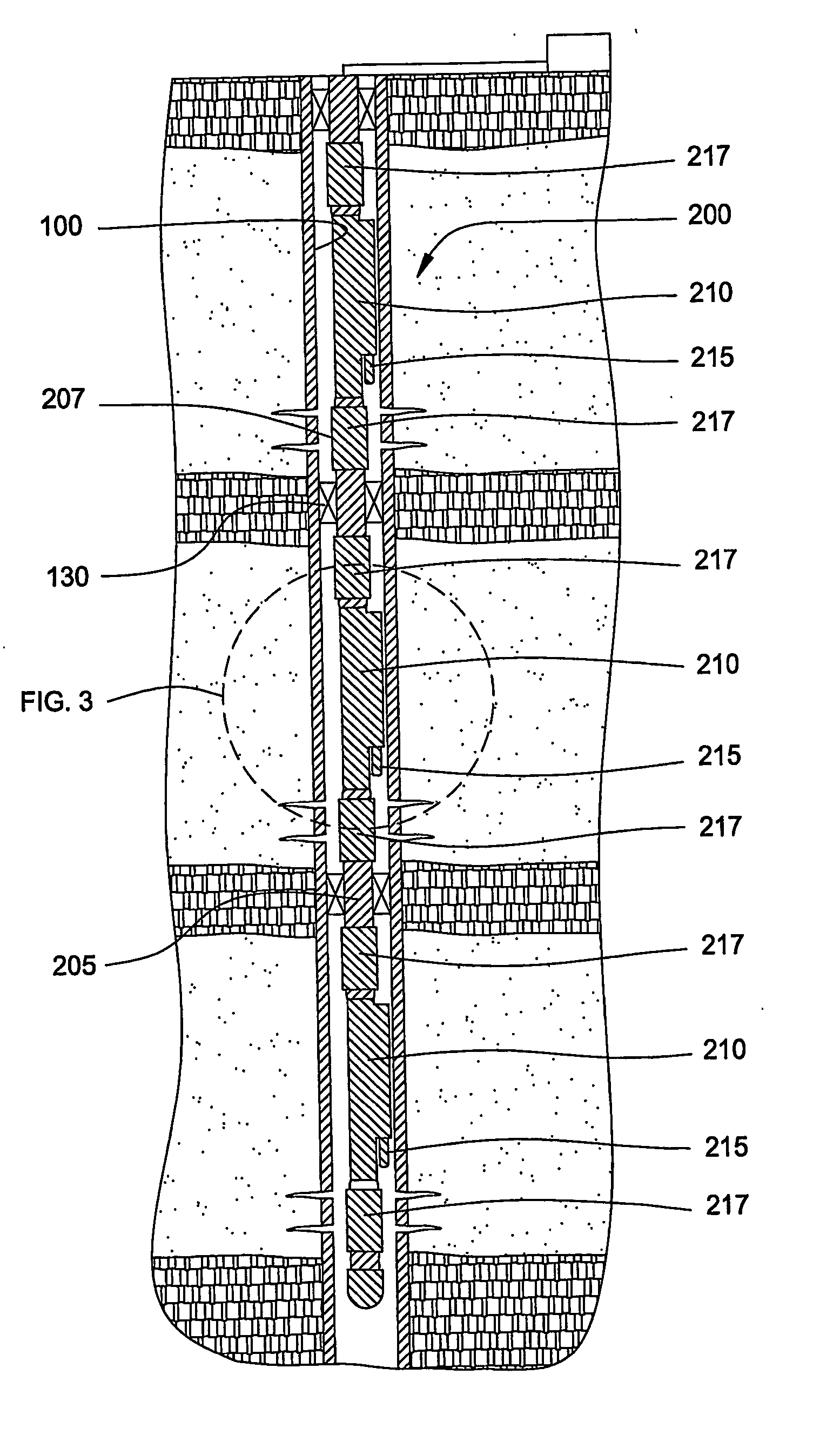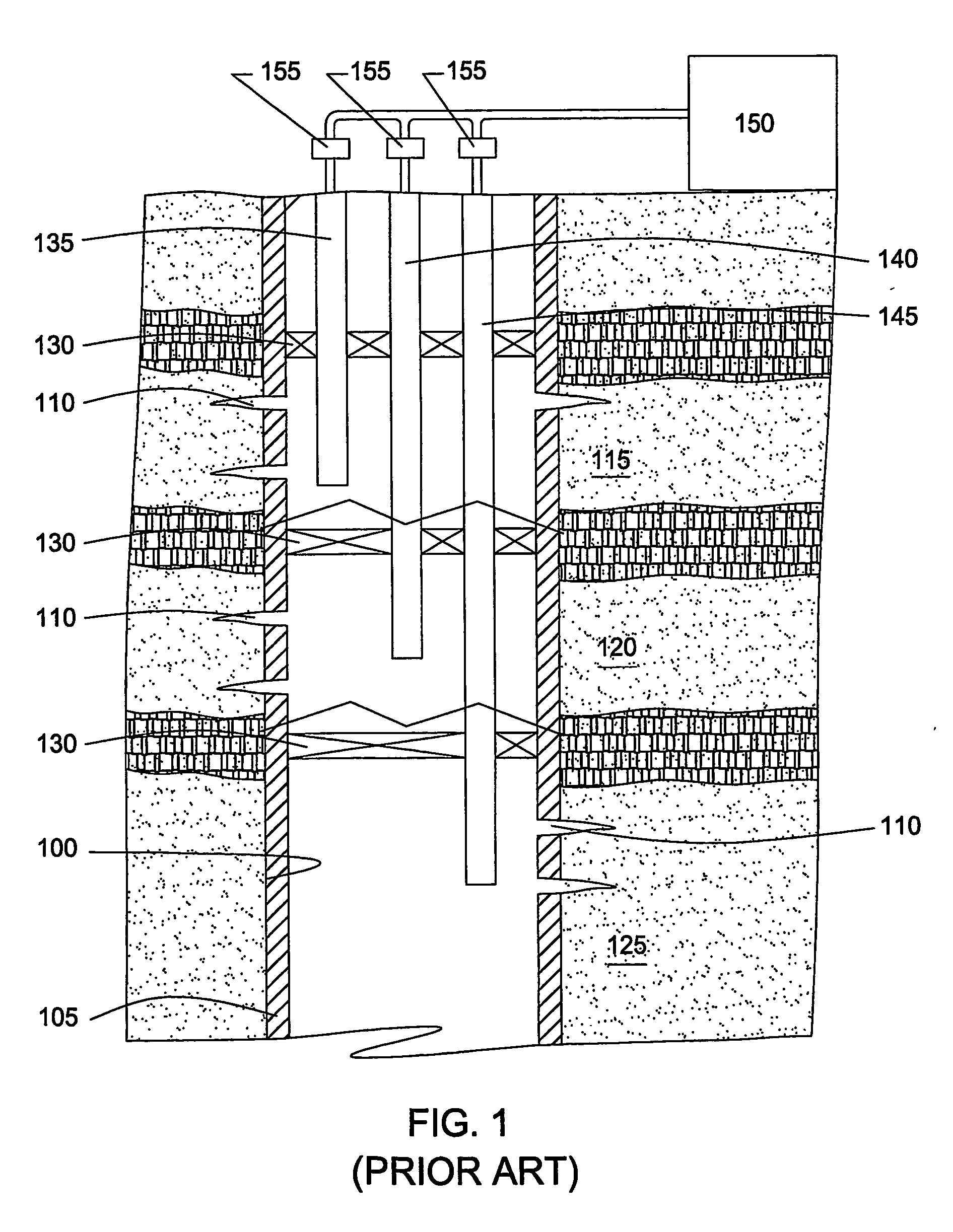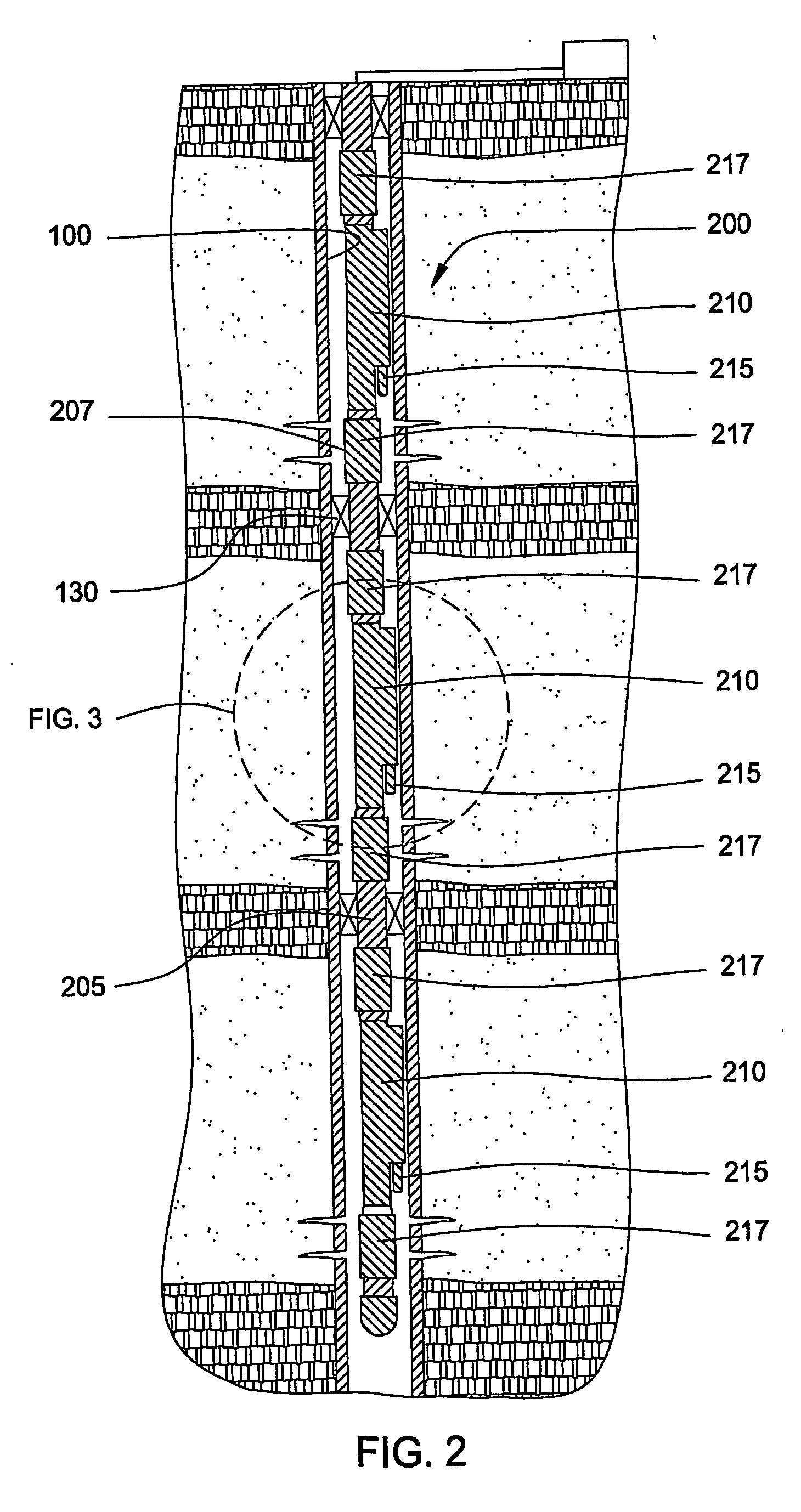Method and apparatus for injecting steam into a geological formation
a geological formation and steam injection technology, applied in the direction of drilling casings, drilling pipes, borehole/well accessories, etc., can solve the problems of insufficient natural pressure in the hydrocarbon formation accessed by most wellbores to cause the hydrocarbons to rise to the surface, practical limitations, and expensive and time-consuming installation of apparatus, so as to achieve uniform steam pressure distribution
- Summary
- Abstract
- Description
- Claims
- Application Information
AI Technical Summary
Benefits of technology
Problems solved by technology
Method used
Image
Examples
Embodiment Construction
[0033] The present invention provides an apparatus and methods to inject steam into a geological formation from a wellbore.
[0034]FIG. 2 is a section view of a vertical wellbore 100 illustrating an apparatus 200 of the present invention disposed in a wellbore. A string of tubulars 205 is coaxially disposed in the wellbore 100. In the embodiment of FIG. 2, the tubing string includes three enlarged area or pockets 210 formed therein, each of which define an annular area with the casing and include a nozzle 215 at one end. The apparatus is located in a manner whereby the pockets formed in the tubular are adjacent perforated sections of the casing. Each perforated area corresponds to a zone of the well to be injected with steam. Each pocket is preferably formed in a sub that can be located in the tubular string and then positioned adjacent a zone. Each nozzle provides fluid communication between the apparatus and a zone of interest. Each zone is isolated with packers 130 to ensure that ...
PUM
 Login to View More
Login to View More Abstract
Description
Claims
Application Information
 Login to View More
Login to View More - R&D
- Intellectual Property
- Life Sciences
- Materials
- Tech Scout
- Unparalleled Data Quality
- Higher Quality Content
- 60% Fewer Hallucinations
Browse by: Latest US Patents, China's latest patents, Technical Efficacy Thesaurus, Application Domain, Technology Topic, Popular Technical Reports.
© 2025 PatSnap. All rights reserved.Legal|Privacy policy|Modern Slavery Act Transparency Statement|Sitemap|About US| Contact US: help@patsnap.com



